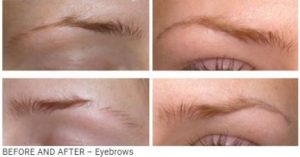Inspire is an implantable medical device that can be a highly effective treatment option for people with OSA who cannot tolerate or do not benefit from CPAP therapy. Dr Weiss will discuss how it works, how it is implanted, and the effectiveness of the device. We also discuss the characteristics of a good candidate for the Inspire device, such as moderate to severe OSA, difficulty tolerating CPAP therapy, and anatomical suitability.
“Inspire” is a brand name for a type of implantable device used to treat obstructive sleep apnea (OSA). The device is designed to help people with moderate to severe OSA who cannot tolerate or do not benefit from continuous positive airway pressure (CPAP) therapy.
How does it work?
During sleep, the muscles in the airway can relax and collapse, which can lead to snoring and obstructed breathing. The Inspire device is designed to prevent this by sending a mild electrical impulse to the hypoglossal nerve, causing the tongue and other soft tissues in the throat to move forward and open the airway.
The Inspire device implant fits under the skin in the upper chest area and is controlled by a small remote that the patient can use to turn it on and off. When the device is turned on and the individual starts to experience sleep apnea, it sends the electrical impulse to the hypoglossal nerve, and the muscles in the airway are stimulated to keep the airway open.
So, in this way, Inspire is like a pacemaker but instead of stimulating the heart, it stimulates the muscles of the tongue. The sensor in your chest detects when you’re trying to take a breath, and the small electrical signal is generated to tell your tongue to move out of the way, opening up the airway and allowing you to breath clearly.
The Inspire device is implanted during a surgical procedure and does require follow-up appointments with a physician to monitor its effectiveness and adjust its settings as needed. It is important to note that not everyone with OSA is a candidate for the Inspire device, and a thorough evaluation by a sleep medicine specialist is necessary to determine if it is a suitable treatment option.
How effective is It?
Clinical studies have demonstrated that Inspire can significantly reduce the severity of OSA, improve quality of life, and reduce daytime sleepiness. In a clinical trial of the Inspire device, patients experienced a 68% reduction in the number of apnea and hypopnea events per hour, which is a measure of the severity of OSA.
The effectiveness of Inspire can vary depending on factors such as the severity of OSA, the anatomy of the airway, and individual patient characteristics.
Is this right for me?
A good candidate for the Inspire device implant typically meets the following criteria:
- Moderate to severe OSA: Inspire is typically recommended for people with moderate to severe OSA, as these patients are at the greatest risk for complications related to OSA.
- Difficulty tolerating CPAP therapy: Inspire is often recommended for people who have difficulty tolerating CPAP therapy, which involves wearing a mask over the nose and/or mouth during sleep to deliver continuous air pressure to keep the airway open.
- Anatomical suitability: A thorough evaluation of the airway anatomy is necessary to determine if the Inspire device is suitable. Specifically, there must be sufficient muscle tone in the tongue and other soft tissues in the throat to respond to the stimulation from the device.
- Good overall health: The Inspire device is implanted under the skin in the upper chest area and requires a surgical procedure, so good overall health is necessary to undergo the procedure.
- Willingness to follow up with a physician: Regular follow-up appointments with a physician are necessary to monitor the effectiveness of the device and make any necessary adjustments.


